François Vigneault's Blog, page 4
August 7, 2022
The City of Belgium by Brecht Evens
Hand-lettering for the English-language edition of The City of Belgium by Brecht Evens, published by Drawn & Quarterly
[image error]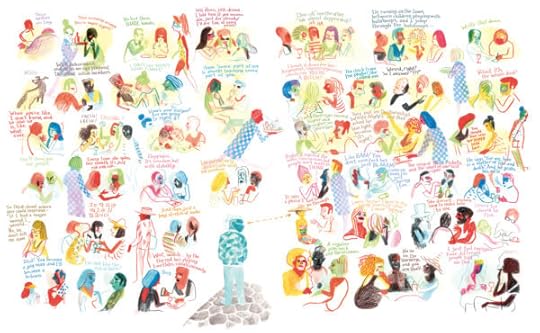




The post The City of Belgium by Brecht Evens first appeared on Tour de François.
August 6, 2022
Lettering in Translation: Q&A with Edward Gauvin

A couple years ago I had the pleasure of hand-lettering the English-language edition of Letter to Survivors, a biting post-apocalyptic satire created by the late, great French cartoonist Gébé. It was published in 1981 and was one of the first books marketed as a “roman graphique” in France. The new translation, published by New York Review Comics in 2019, was by Edward Gauvin, an award-winning translator who has worked on a truly staggering number of graphic novels (more than 300 titles!), short stories, and more.
Edward was a real pleasure to work with, a very detail-oriented and creative translator with a supremely developed feel for the subtle nuances in Gébé’s writing. He was very involved in every step of my lettering process on the book, with a ton of feedback on subtle elements like line breaks and spacing that many people might have missed, his approach to Gébé’s work often reminded me of poetry rather than prose. The resulting graphic novel is a very bleak, very funny dissection of the excesses of capitalism and consumer culture that sadly hits as hard today as it did more than 40 years ago.
Shortly after the project concluded, Edward did a Q&A with me via email about my process with hand-lettering this book and in general. This interview hasn’t appeared in print or online before, but since I have been doing more and more lettering gigs (such as The City of Belgium by Brecht Evens, Talli: Daughter of the Moon by Sourya, and an upcoming edition of Notes by Boulet) I thought it would be a great time to run it. As for Edward, he is as busy as ever, in 2020 a grand total of FIVE books he translated were nominated for Eisner Awards (in fact hardly a year goes by that Edward’s work isn’t amongst the Eisner nominees). I’m looking forward to my next collaboration with him! In the meantime I hope you enjoy this little discussion of the art of lettering in translation.

Edward Gauvin: Could you discuss your process in conceiving a lettering style for this book? To what extent did you try to copy Gébé’s lettering? Or did you make a conscious attempt to depart from it? Can you provide specific examples of differences, and talk about the thought process that led you to those choices?
François Vigneault: It took several attempts to get something that felt like Gébé’s original lettering… My early attempts were in general too tight, too strict in feeling. Gébé’s lettering is at times very idiosyncratic, changing in size and scale, becoming more or less italicized, bending to fit into his word balloons and sometimes running right across his art… I had to really “let loose” to get close to his style. At the same time, it was important that the English lettering closely match the line of the original artist… after all the lettering exists right there on the page with his artwork, I don’t want that to be jarring for the reader. Hopefully the art is “invisible” in some ways… If I did my job right few people will take note of my work, it will be as seamless as possible with the original.

EG: How close would you say this is to your own “natural” or “normal” lettering style? What are some specific ways you had to make a deliberate effort in making it different from your own style? How many different lettering styles do you think you’ve used in your own comics, like Titan or 13th Avenue?
FV: Quite different! I’ve used a wide range of lettering in my work, both hand-lettering and also creating digital fonts, but in general I strive to keep my own lettering as tight and consistent as I can… I feel like Gébé had a much more natural, improvisational style, adapting to his artwork. So I definitely made an effort to capture that more loose feel.
 Lettering with a custom typeface in TITAN
Lettering with a custom typeface in TITANEG: What are some other lettering jobs you’ve done, hand and/or digital? How did this book compare with them? Is there anything you did here that you wouldn’t on other jobs?
FV: In addition to my own work, I’ve done a quite few different lettering projects, often creating fonts from some other artist’s handwriting (Luc Bossé, Zack Soto, Sophie Bédard). I’m currently doing the hand-lettering on City of Belgium by Brecht Evens (the English-language edition of Les Rigoles), that’s going to be coming out from Drawn & Quarterly… A very multi-layered project with many different typeface styles, colors, and more.
 A hand-lettered page from The City of Belgium
A hand-lettered page from The City of BelgiumEG: Were you aware a digital font based on Gébé’s handwriting existed? You can see it in use online here , in an excerpt from Letter to Survivors published in 2012 in Words Without Borders. Were you aware of this publication, and if so, did it influence your work?
FV: No, very interesting! I hadn’t seen that before. That actually reminds me of some of my earlier attempts to tackle Gébé’s style… It works well and looks pretty good with the artwork, but it’s also a bit too tight, it inevitably lacks that true variation you get in his original, and (hopefully) in my hand-lettered version… Something like this definitely could have worked but I for one am really glad that we did the fully hand-drawn text for the book.
EG: Were you familiar with Gébé’s work as a whole before starting? Had you read this book, or any of his others, or seen his Hara Kiri and Charlie Hebdo strips? If so, did that influence you in any way? If not, did you feel any need to look him up, or do you think that is irrelevant to the letterer’s task?
FV: I was definitely somewhat aware of him from Charlie Hebdo and also that Lettre aux survivants was a part of L’Association’s publishing history, but I hadn’t read much of his work, so I came to the project with pretty fresh eyes. A very interesting introduction!
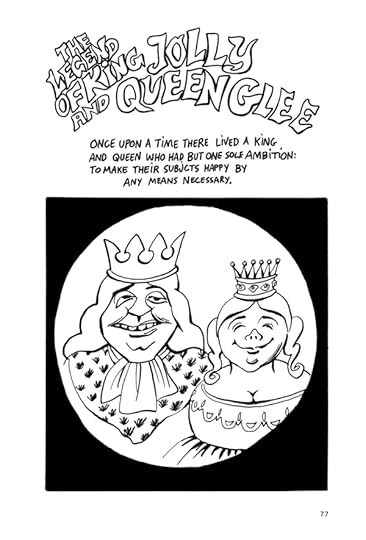
EG: This book was originally published in France in 1981, then reprinted in 2002, and translated into English in 2019. Is there any tinge of “era” to your hand-lettering here? Was there any attempt to make it feel retro, or conversely, more contemporary? How would you characterize Gébé’s lettering—how it makes you feel—if at all? What are some expressive qualities you tried to impart to your own? Was there a mood (or several) you were trying to capture or convey with your lettering?
FV: I definitely think that this work has a certain “punk” or even an “underground” feel (no pun intended), that I think is partially an artifact of its age, maybe even something you might call “retro.” I’m not sure what Gébé’s actual technique was when he was creating Letter to Survivors, but to me it feels raw and direct, as if he was drawing and writing and lettering right on the page. So to me it was important to try to capture that improvisational feel.
EG: What is your lettering process like? I presume hand-lettering is easier than designing a typeface, yet still calls for some consistency and regularity. What counts as a “mistake” for you, that would cause you to re-do a passage? (Here I don’t mean things like spelling a word wrong: I’m more interested in what exactly informs decisions like “That doesn’t look right, so I’m going to re-do it”—unless that never happens.)
FV: I worked digitally, right over the original artwork and lettering so that I can get as close as possible Gébé’s placement, particularly when it comes to line spacing and character size. This also has the advantage of always keeping the artist’s original letterforms right in front of me, so that I don’t accidentally stray too far. I’ll frequently redraw a word or even a single letter multiple times, if it doesn’t feel like it’s working I’ll just erase it or “undo” and draft it again, over and over sometimes! But the good thing is that this allows me to be bolder with my initial strokes and lines, to be a little reckless, and I think that really helps to approximate the feeling of a book like this. I also left in many minor “mistakes” if I felt that they looked right…. A too-thin stroke, or a little ink blob, that adds to the “hand-crafted” quality and I don’t mind that at all. More rarely, I had to re-do whole passages, or otherwise do some major edits… Often if it turned out that the English translation didn’t fit neatly into the space in the original art. That’s not very fun!
 The original French vs the the translation. Note how we kept the “mistake” of the word balloon being broken.
The original French vs the the translation. Note how we kept the “mistake” of the word balloon being broken.EG: Did you read the book in French before beginning, or only my translation? Does reading the whole book help, or doesn’t that matter? Did your opinion of the book change over the course of your work on it? Are some books fun to read but not fun to letter, or vice versa, and what aspects affect that?
FV: Actually, I read both the original and your translation in tandem, very slowly and carefully as I did the lettering. It makes for an interesting reading experience, you have to pay attention to each and every word and phrase, and you become very aware of little nuances in the author’s language and style.

EG: Lettering your own comics also involves placing dialogue balloons in ways that are harmonious to the overall pictorial composition. I assume you didn’t have to do that here (did you? Was enlarging or shrinking any balloons an option?), but what are some design elements (ex. white space?) that had to be considered in lettering this book?
FV: We tried very hard to never alter Gébé’s original artwork or word balloons, even going so far as to preserve his “mistakes”; when a word in the original would run over the edges of a word balloon, for instance. But I definitely had to consider where the white space was on the page, trying to replicate the original, which sometimes had unusual line breaks and other things that made the white space quite striking, visually. But again, this wasn’t so much a creative effort as an effort to try to seamlessly recreate the original feeling of the work, with all its little quirks.
EG: What was the hardest page in this book, if there was one? Can you walk us through what made it hard, any problems, and how you solved them?
FV: The hardest pages for me were right at the beginning, when I was still trying to figure out Gébé’s style… I think I did eight or more versions of my initial test page before I got it right! But once that was in place the project moved forward smoothly.

The post Lettering in Translation: Q&A with Edward Gauvin first appeared on Tour de François.
July 23, 2022
Boat Life by Tsuge Tadao
Cover design for Boat Life by Tsuge Tadao, translated by Ryan Holmberg, published by Floating World Comics. Published in December 2022, available for preorder now from your favorite bookseller or local comic book shop thru your local comic book shop (Diamond Code JUN221577).
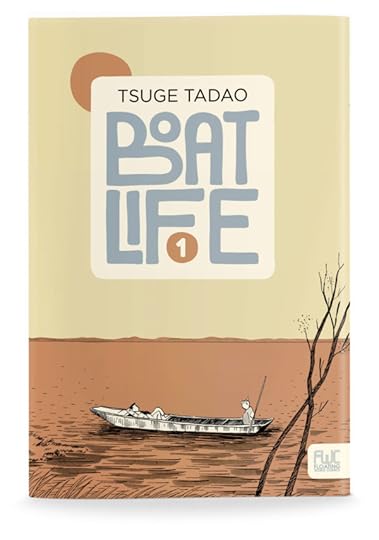


Based loosely on manga pioneer Tsuge Tadao’s own daily life, Boat Life follows novelist Tsuda Kenta on his hapless pursuit of reprieve and reverie on a homely houseboat on the Tonegawa River near Tokyo. Across a series of magical-absurdist quests, this charming graphic novel stars a panoply of personable characters, including a drunkard fisherman, a pervy monk, a talking corpse, and the protagonist’s loving yet wary wife and son.
A late-career classic from the cult creator of Trash Market and Slum Wolf, Boat Life offers a relaxed take on aging and the grind of work and family, and a philosophical elaboration of themes Tsuge Tadao has been exploring since his debut in the legendary alt-manga magazine Garo in the late 1960s.
Features a 27-page essay section including: Garo Gone Fishin’ by translator Ryan Holmberg, Days Fishing and Cartooning by Tsuge Tadao and Boat Dreams by Tsuge Tadao.
The post Boat Life by Tsuge Tadao first appeared on Tour de François.
July 11, 2022
New A2G Episodes: Tartt, LeGuin, Chiang, and More

Jonas Madden-Connor and I have been posting new episodes of our literary adaptation podcast Apples to Giraffes every other Thursday for a couple months now, and our back catalog is growing steadily! Here are a few of our recent deep dives into the art of adaptation:

This week we’re talking about The Hunter, a 1962 novel by Richard Stark AKA Donald Westlake. This one’s been adapted previously, so we discuss the two movies and a graphic novel. We also play a game!
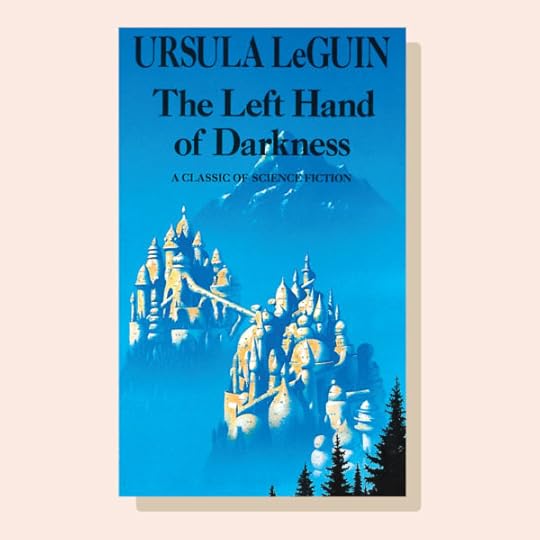
The Left Hand of Darkness by Ursula K. Le Guin
Jonas and François revisit one of the classics of the sci-fi genre, Ursula K. Le Guin’s unadapted (and perhaps unadaptable?) The Left Hand of Darkness. This gender-bending classic of science fiction that won both the Hugo and Nebula awards when it came out (a feat only Dune had done previously)! Never adapted to film, and perhaps with good reason?
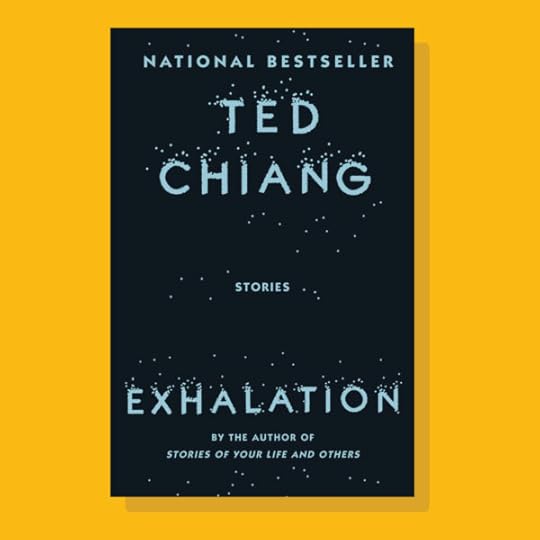
Jonas and François take on not one, not two, but THREE stories from Ted Chiang! This contemporary sci-fi author might just be the best of the best, crafting sparkling, gem-like short stories that are always thought-provoking and powerful. We tackle a selection of three stories: “Story of Your Life” (the basis for the film Arrival), “The Merchant and the Alchemist’s Gate,” and “Hell is the Absence of God.”

The Secret History by Donna Tartt
A perennial favorite answer to the question “What novel would you most want to see turned into a film?” has got to be The Secret History by Donna Tartt. This never-adapted, much-loved literary sensation is coming up on its 30th anniversary! How would we adapt this book? And do we think it should even be adapted in this day and age? Tune in to find out!
Next up, we are gonna be tackling A Visit from the Goon Squad by Jennifer Egan on July 21st. Want to get a head start on your reading for upcoming episodes? Below you will find a list of what’s on our “to be read” pile:

BONUS: For our episode on The Secret History by Donna Tartt, I whipped up these “Cast Party” images pitting my picks (on the left) versus Jonas’ picks (on the right) for the central players in the book! Who cast it better? You can always follow Apples to Giraffes on Twitter and Instagram to let us know!


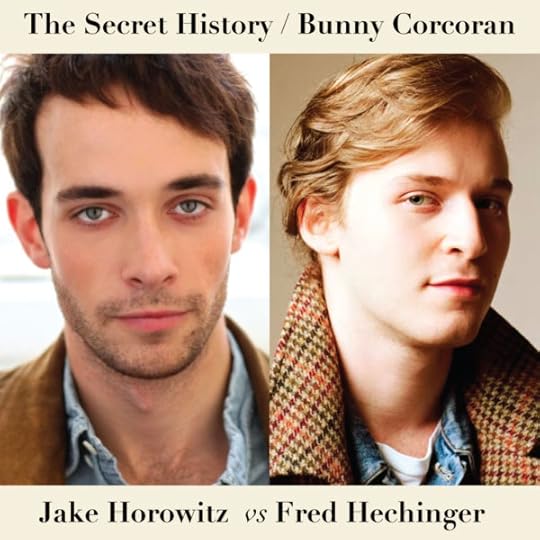


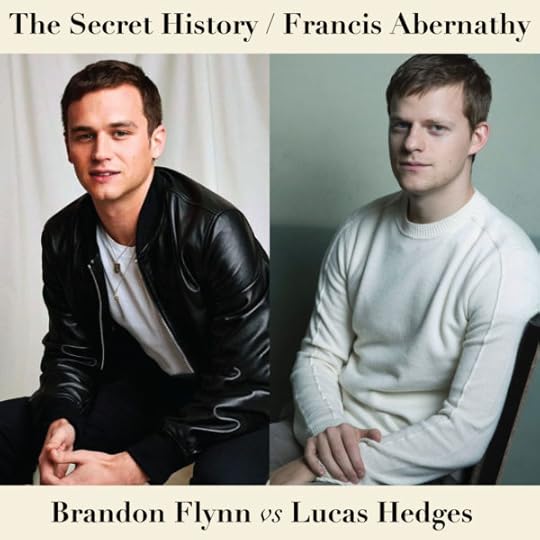
The post New A2G Episodes: Tartt, LeGuin, Chiang, and More first appeared on Tour de François.
June 29, 2022
Interview on the Parker Edison Project

I was really delighted to appear on the Parker Edison Project, where Parker and I discussed my book TITAN, books that influenced me at a young age, the music that appears in the story, and weaving history and current events into the book.
Doing this interview was honestly quite emotional for me, Parker is literally my oldest friend, someone I met when I was maybe 10 years old, painfully shy and awkward, and definitely not fitting in to my elementary school. As I mention in the interview, he ended up becoming my “slightly older, but definitely much cooler brother” and he had a major influence on my early development as a creator and thinker… He was a super creative guy himself, loved film and music (he turned me on to everything from The Autobiography of Malcolm X and Spike Lee to De La Soul and Guns N Roses), and was the first person I can remember making up stories with me, always encouraging my passion to create narratives and art.
Parker and I fell out of touch when we went to different middle schools and drifted into different social circles, and in the pre-internet days when you lost contact it was hard to find someone again! But we finally reconnected a couple years back, and it was awesome to get to talk again and catch up on all the things that had happened to us in the last 30 years or so.
I was stoked (but not at all surprised) to learn Parker had been very busy on his own creative journey, finding a ton of success as a rapper in groups like Parker and the Numberman and Parker Meridien. Last year he launched his podcast the Parker Edison Project on KPBS and I’ve been a fan from the jump. He focuses on the culture of my home town of San Diego, and he approaches it thru the lived experience of Black America, but his voracious appetite for culture, history, and style knows no bounds, and he’s covered everything from the role natural spaces play in our lives to the underground history of cross-border radio. It’s always so cool to see a friend doing what they love, but there’s something extra special when you really, truly dig their work and what they are doing. After you check out the interview above (which is part of a great episode dedicated to authorship and books, featuring author Q.J. Zephyr, playwright Miki Vale, and more), please take a peek thru Parker’s back catalog as well, I think you’ll definitely dig it!
The post Interview on the Parker Edison Project first appeared on Tour de François.
May 30, 2022
In This Issue… Black Hole #1
I had the immense pleasure (and honor!) of being Zack Soto’s first guest on his brand-new podcast, “In This Issue…”!

In this first episode we do a deep dive into Black Hole Issue 1 by Charles Burns … This was THE comic book series for me back when it was coming out in the late 1990s and early 2000s, and in fact I remember that Black Hole was the ONLY comic I was buying for quite a few years when I was getting a bit disenchanted with the art form… But a new issue of this masterpiece by Charles Burns would always bring me back! Suffice it to say that looking at this first issue in depth with Zack has only increased my appreciation of this comics, which more than stands the test of time.

Had so much fun chatting with my pal Zack, the dude is a veritable encyclopedia of comics knowledge and I think you’ll enjoy our convo… And don’t forget to subscribe to “In This Issue…” on Apple Podcasts or wherever you get your podcasts, I know Zack has a bunch of amazing comic book folks lined up to talk about their own formative comics in the weeks and months to come!
The post In This Issue… Black Hole #1 first appeared on Tour de François.
May 24, 2022
Montreal Comic Art Festival: May 27-29, 2022
I have a very full schedule at this year’s FBDM/MCAF, which is returning in-person for the first time in two years! Can’t wait to see folks again! 
I am a big fan of this Festival, which is FREE and open to the public (this year the event is taking over Saint Denis Street which is so much fun). It is a very open, energetic, and community-minded event that is trying to bring the “9th Art” to the people, in both French and English. If you will be in Montréal please do swing by, say hi, and check out all the cool work that these creators are making!

Below you will find descriptions for the panels I will be moderating as well as my signing schedule and other links. I also recently talked with John at True North Country Comics about the Festival and the fantastic programming the team has concocted for the event, including art shows, unique conversations between creators, round-table discussions (some of which I will be hosting, see below), and the many ways that this event really is all about “Making Connections.”

Adaptation in Comics: Classics Reimagined
Friday, May 27 • 4-5pm • HUB
Whether it’s Dracula, the Little Prince or the Knights of the Round Table, certain characters and stories exert an undeniable fascination on our collective unconscious. Why do these tales in particular continue to inspire new visions, adaptations, and spin-offs, and what challenges do comic book creators face in bringing these stories to the page?
Featuring:
Katharina Greve
Salgood Sam
Sacha Lefebvre
Moderated by François Vigneault

Living Cities
Saturday, May 28 • 2:30-3:30pm
HUB (@montrealcowork )
From the suburbs of Maui to the alleys of Hochelaga, the city is more than just a landscape, it is a window on our way of life and a reflection of our fears, hopes, dreams, and nightmares. Come and meet three creators from all over the world for whom the lived environment is just as important as the characters in their story.
Featuring:
Cab
R. Kikuo Johnson
Jared Muralt
Moderated by François Vigneault
My Schedule of Events
Thursday May 26 (Pro Day)
 Le Monde du Creation, 11:30am – 12:30pm
Le Monde du Creation, 11:30am – 12:30pmFriday May 27
 Dédicaces Millenium Comics, 1:30 – 3:00pm
Dédicaces Millenium Comics, 1:30 – 3:00pm Adaptation in Comics: Classics Reimagined, 4:00 – 5:00pm
Adaptation in Comics: Classics Reimagined, 4:00 – 5:00pm Dédicaces Éditions Pow Pow, 5:30 – 7:00pm
Dédicaces Éditions Pow Pow, 5:30 – 7:00pmSaturday May 28
 Living Cities, 2:30 – 3:30pm
Living Cities, 2:30 – 3:30pm Dédicaces Éditions Pow Pow, 4:00 – 5:30pm
Dédicaces Éditions Pow Pow, 4:00 – 5:30pmSunday May 29
 Dédicaces Millenium Comics, 11:00am – 1:00pm
Dédicaces Millenium Comics, 11:00am – 1:00pmAnd through May 31
 Vicolli et Ruelles Art Exhibit
Vicolli et Ruelles Art ExhibitThe post Montreal Comic Art Festival: May 27-29, 2022 first appeared on Tour de François.
May 18, 2022
Orcs in Space Volume 3 — Oni Press

Orcs in Space Volume 3, out in October 2022!
The post Orcs in Space Volume 3 — Oni Press first appeared on Tour de François.
May 11, 2022
My New Podcast: Apples to Giraffes

“We’re all products of pop culture. Hard to escape it. Film and books, though, are as different as apples and giraffes…”
—Dennis Lehane
That’s right! My long-time friend (and brilliant cartoonist) Jonas Madden-Connor and I are launching our very own podcast! Our new show is called Apples to Giraffes and it’s all about the art of adaptation: The transmutation of novels into films, movies into comics, video games into TV shows, and anything else we decide we want to discuss! Each episode Jonas and I will take a deep dive into a piece of narrative art (upcoming episodes tackle works by Richard Stark, Ursula K. LeGuin, Donna Tartt, and more), successes and failures in previous adaptations, and what we think we might do with it if we were in charge.
The first episode is out now and features a look at Ken Grimwood’s never-adapted, highly underrated, and extremely influential 1986 novel Replay! You can also find Apples to Giraffes on Apple Podcasts, Spotify, Stitcher, or wherever else you get your podcasts. Please give it a listen, subscribe, and rate & review! You can also follow along on Twitter and Instagram.

The post My New Podcast: Apples to Giraffes first appeared on Tour de François.
April 26, 2022
Orcs in Space Volume Two Out Now!
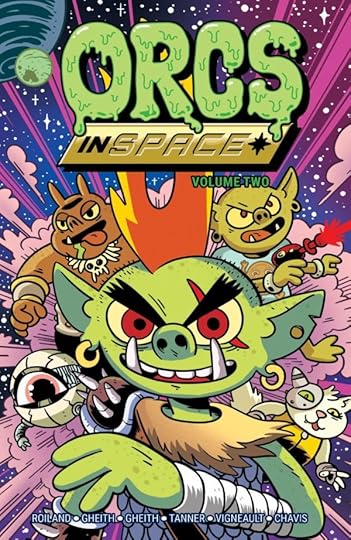
After a few delays because of (you guessed it!) the ongoing international paper shortage and other Covid-related business, I’m very happy to say that Orcs in Space Volume Two is out now!
If you want to get your hands on it, there are lots of options for you, Orcs in Space will be available wherever you buy books, from local indies to international mega-corporations.
Your Local Comic Book ShopAdd on GoodreadsBookshopIndieBoundAmazonBarnes & NobleIndigoRead on for a sneak preview!





The post Orcs in Space Volume Two Out Now! first appeared on Tour de François.



